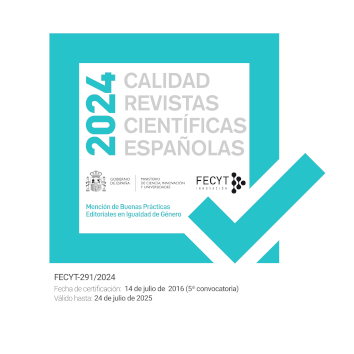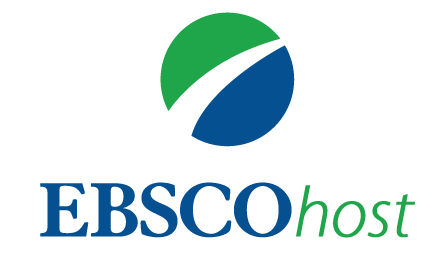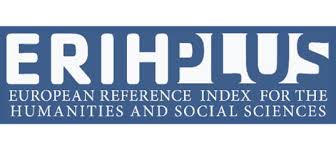Digital technology and University leisure: Exploring learner access, use and attitudes
DOI:
https://doi.org/10.17398/1695-288X.22.2.83Keywords:
Digital competence, Digital technology, Access, Use, Digital leisureAbstract
Digital leisure has become a useful and motivating didactic tool for student learning, which also contributes to the acquisition of digital skills. The aim of this study is to analyse the access and use of digital technology by university students at the Universidad de San Carlos de Guatemala (USAC), as well as their attitudes towards digital leisure. This study is framed within the quantitative paradigm, with a non-experimental, cross-sectional, descriptive, exploratory, and correlational design. A total of 203 university students (47.5% male; 52.5% female) from USAC between the ages of 17 and 49 (M=23.33; SD=5.55) participated in the study. The results indicate that the most accessed digital devices and services by university students are smartphones (91.8%) and laptops (80.3%). Additionally, 96% of the students have profiles on social networks. Specifically, younger students (17-20 years) are the ones who have the highest usage of digital technology for leisure purposes and show greater enjoyment of these digital activities. This data shows how university students, particularly newly admitted ones, are highly familiar with digital technology and possess a positive attitude towards digital leisure. Thus, teachers can make use of this openness towards technology and include it as a learning tool in the classroom to then promote digital competences and so create a motivating and effective learning environment.
Downloads
References
Asparouhov, T., & Muthén, B. (2009). Exploratory Structural Equation Modeling. Structural Equation Modeling, 16(3), 397-438. https://doi.org/10.1080/10705510903008204
Badia, A., Meneses, J., Fàbregues, S., & Sigalés, C. (2015). Factores que influyen en la percepción de los profesores de los beneficios instruccionales de los medios educativos digitales. RELIEVE-Revista Electrónica de Investigación y Evaluación Educativa, 21(2). https://doi.org/10.7203/relieve.21.2.7204
Becerra, M., & Martín, F. (2015). College students perception ofvirtual learning platforms and social networks. Descriptive study. Pixel-Bit. Revista de Medios y Educación, (47), 223-230.
Botero-Gómez, V., Ruiz-Herrera, L. G, Valencia-Arias, A., y Neyra-Alemán, K. J. (2022). A Model to Assess the Adoption of e-Learning Tools by Professors in the Context of COVID-19. Revista Iberoamericana de Tecnologias del Aprendizaje, 17(3), 270-278. https://doi.org/10.1109/RITA.2022.3191304
Bryce, J. (2001). The technological transformation of leisure. Social Science Computer Review, 19(1), 7-16.
Calatayud, V. G., García, M. R., & Espinosa, M. P. P. (2018). Formación en competencias digitales para estudiantes universitarios basada en el modelo DigComp. Edutec. Revista electrónica de tecnología educativa, (65), 1-15. https://doi.org/10.21556/edutec.2018.65.1119
Cartagena, M.A. (2016). Pedagogical usage of Facebook and its contribution in teachers self-efficacy. Revista Latinoamericana de Tecnología Educativa, 15(1), 115-129.
Cohen, J. (1988). Statistical power analysis for the behavioral sciences. Academic Press.
Comisión Europea. (2019). A Framework for Developing and Understanding Digital Competence in Europe. https://joint-research-centre.ec.europa.eu/digcomp/digcomp-framework_en
Correa, T. (2016). Digital skills and social media use: how Internet skills are related to different types of Facebook use among ‘digital natives’. Information, communication & society, 19(8), 1095-1107. https://doi.org/10.1080/1369118X.2015.1084023
Elosua P. O., y Zumbo, B. D. (2008). Coeficientes de fiabilidad para Escalas de respuesta categórica ordenada. Psicothema, 20(4), 896-901. https://reunido.uniovi.es/index.php/PST/article/view/8747
Gómez, M., Roses, S., & Farias, P. (2012). The Academic Use of Social Networks among University Students. Comunicar, 19(38), 131-138.
Gutiérrez, E. A., Florido, I. R., & Blanco, A. V. (2013). El ocio digital como recurso para el aprendizaje, la socialización y la generación de capital social. Revista de Sociología de la Educación-RASE, 6(2), 196-209.
Hargittai, E. (2002). Second-level digital divide: differences in people’s online skills. First Monday, 7(4). https://firstmonday.org/ojs/index.php/fm/article/download/942/864?inline=1
Hernández, A., Hidalgo, M. D., Hambleton, R. K., & Gómez, J. (2020). International test commission guidelines for test adaptation: A criterion checklist. Psicothema, 32(3), 390-398. https://doi.org/10.7334/psicothema2019.306
Hootsuite & We Are Social. (2022). Digital 2022: Guatemala. https://datareportal.com/reports/digital-2022-guatemala
Instituto Nacional de Estadística. (2022). Encuesta sobre equipamiento y uso de tecnologías de información y comunicación en los hogares 2022. https://www.ine.es/prensa/tich_2022.pdf
Kline, R. B. (2015). Principles and practice of structural equation modeling. Guilford publications.
Lozano, A., & Fernández, J. S. (2019). Hacia una educación para la ciudadanía digital crítica y activa en la universidad. RELATEC: revista latinoamericana de tecnología educativa, 18(1),175-187. http://dx.medra.org/10.17398/1695-288X.18.1.175
Martínez-Sala, A. M., & Alemany-Martínez, D. (2022). Educational Social Networks for Acquiring Digital Competencies in Higher Education. Revista mexicana de investigación educativa, 27(92), 209-234.
Morduchowicz, R. (2018). Ruidos en la Web. Cómo se informan los adolescentes en la era digital. Mondadori.
Nimrod, G., & Adoni, H. (2012). Conceptualizing e-leisure. Loisir et Société/Society and Leisure, 35(1), 31-56. https://doi.org/10.1080/07053436.2012.10707834
Papademetriou, C., Anastasiadou, S., Konteos, G., & Papalexandris, S. (2022). COVID-19 pandemic: the impact of the social media technology on higher education. Education Sciences, 12(4). https://doi.org/10.3390/educsci12040261
Prensky, M. (2001). Digital natives, digital inmigrants. On the Horizon, 9(5), 1-6.
Ragheb, M. G., & Beard, J. G. (1982). Measuring leisure attitude. Journal of Leisure Research, 14(2),155–167. http://www.bwgriffin.com/gsu/courses/edur9131/2018spr-assignments/02-Ragheb-Beard-1982.pdf
Ragnedda, M. (2017). The third digital divide: A Weberian approach to digital inequalities. Routledge. https://doi.org/10.4324/9781315606002
Ragnedda, M., & Muschert, G. W. (Eds.). (2013). The Internet and Social Inequality in International Perspective. Routledge. https://doi.org/10.4324/9780203069769
Rubio, M.J., & Escofet, A. (2013). Estudio sobre los usos de las TIC y las posibilidades de empoderamiento en las mujeres. Revista Iberoamericana de Educación, 62(3), 1-13.
Sánchez-Caballé, A., Gisbert Cervera, M., & Esteve-Mon, F. M. (2020). The digital competence of university students: a systematic literature review. Revista de Psicologia, Ciències de l’Eduació i de l’Esport, 38(1), 63-74.
Santana, R., y García, L. (2018). La gamificación en la educación superior. Tecnologías emergentes que motivan al estudio y aumentan el rendimiento. Editor Corporación Cimted.
Smahel, D., Machackova, H., Mascheroni, G., Dedkova, L., Staksrud, E., Ólafsson, K., Livinstone, S., Hasebrink, U. (2020). EU Kids Online 2020: Survey results from 19 countries. EU Kids Online. http://hdl.handle.net/20.500.12162/5299
Spanhol, F. J., Martín-Cuadrado, A. M., & Pereira, N. L. (2020). Prácticas para la enseñanza y el aprendizaje de habilidades digitales en la educación superior: una revisión sistemática en la literatura. Revista Exitus, 10, 01-24. https://doi.org/10.24065/2237-9460.2020v10n1id1212
Teixeira, A. y Freire, T. (2013). The Leisure Attitude Scale: psychometrics properties of a short version for adolescents and young adults. Leisure/Loisir, 37(1), 57-67, https://doi.org/10.1080/14927713.2013.776748
Tejedor, S., Bugs, R. C., & Luque, S. G. (2019). Millennials and the Internet: How Ibero-American students of communication use and value social media. Anàlisi, (60), 43-63.
Unión Internacional de Telecomunicaciones. (2022). Informe sobre la conectividad mundial de 2022. https://www.itu.int/dms_pub/itu-d/opb/ind/D-IND-GLOBAL.01-2022-SUM-PDF-S.pdf
Valentín, A., Mateos, P. M., González-Tablas, M. M., Pérez, L., López, E., & García, I. (2013). Motivation and learning strategies in the use of ICTs among university students. Computers & Education, 61, 52-58. https://doi.org/10.1016/j.compedu.2012.09.008
Van Dijk, J. (2020). The digital divide. John Wiley & Sons.
Vergés, N. (2012). De la exclusión a la autoinclusión de las mujeres en las TIC. Motivaciones, posibilitadores y mecanismos de autoinclusión. Athenea Digital, 12(3), 129-150.
Yang, Y., & Green, S. B. (2010). A note on structural equation modelling estimates of reliability. Structural Equation Modeling, 17, 66-81. https://doi.org/10.1080/10705510903438963
Downloads
Published
Versions
- 2024-06-22 (2)
- 2023-07-21 (1)
Issue
Section
License
Copyright (c) 2023 Estefanía de los Dolores Gil García, Pedro Francisco Alemán Ramos, Juan Carlos Martín Quintana

This work is licensed under a Creative Commons Attribution-NonCommercial-NoDerivatives 4.0 International License.
Authors who publish in this journal accept the following conditions:
1. The Author retains copyright in the article. Upon acceptance of the article, the author shall grant to the Publisher the right of first publication of the article. with the dcoument registered with the Creative Commons Attribution-NonCommercial-NoDerivative 4.0 International (CC BY-NC-ND) license, which allows to third parties to use what is published whenever they mention the authorship of the work and the first publication in this journal.
2. Authors can make other independent and additional contractual agreements for the non-exclusive distribution of the article published in this journal (eg, include it in an institutional repository or publish it in a book) provided they clearly indicate that the work was published for the first time in this journal.
3. Authors are allowed and recommended to publish their work on the Internet (for example on institutional or personal pages) before and during the review and publication process, as it can lead to productive exchanges and a greater and faster diffusion of published work (see The Effect of Open Access).









